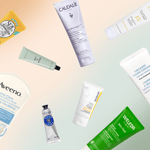Is your esthetician breathing easy?
I recently bought nail polish remover for the first time in years. After puzzling over the options at my local
I recently bought nail polish remover for the first time in years. After puzzling over the options at my local drug store, I walked out with a small bottle of acetone-free enamel remover. I couldn’t recall why I was supposed to avoid acetone, other than the unpleasant fumes, but opted to anyway. Later, when I used the product, I found the smell overwhelming—even without the acetone. I couldn’t help wondering what else I should be avoiding when it comes to nail care products…
Then, this morning, I came across this press release about a new study, published in the Journal of Community Health, on nail salon workers in the U.S. The industry is growing in leaps and bounds south of the border—and in Canada—and the majority of employees are immigrant women from Southeast Asia who, say the researchers, may "face socio-cultural barriers that compromise their workplace safety and health care access." The researchers—who all work for various public health organizations in California—were particularly concerned with the workers daily use of products containing cancer-causing chemicals (carcinogens) and chemicals that disrupt the body’s hormonal balance (endocrine disruptors).
The research team surveyed 201 Vietnamese workers at 72 nail salons in California and determined that the majority (80 percent) are concerned about their health as a result of chronic exposure to chemicals in their workplace. Furthermore, 62 percent report experiencing ill health, and 47 percent reported health symptoms that may be associated with exposure to hazardous chemicals, which are commonly used in nail care products.
The study cites the following ingredients of concern in nail care products: Solvents, plasticizers, resins and acids that may contain carcinogens such as methylene chloride, formaldehyde, and benzene, as well as endocrine disruptors, such as toluene and dibutyl phthalates.
Importantly, the authors note that nail care products contain very small amounts of these compounds, so they are unlikely to pose much of a risk to most women. Furthermore, much of the research into the effects of these compounds on human health is preliminary.
If you’re concerned about what’s in your bathroom cabinet, visit the Environmental Working Group’s cosmetic safety databse, Skin Deep. You can search for the products you commonly use to find out if any of their ingredients are cause for concern. Here are a few products that they score well (the lower the score, the better):
Remover:Cutex Quick & Gentle Felt Nail Polish Remover Pads, Non-Acetone
Polish: Revlon Double Twist Base & Top Coat
Cuticle Treatment: Burt’s Bees Lemon Butter Cuticle Cream
(Note: Acetone is a volatile organic compound (VOC) that is used as a solvent and can causes headaches, nausea, vomiting and other symptoms, depending on the level of exposure. For more information on acetone and human health, see this fact sheet from the U.S. National Institutes of Health.)




